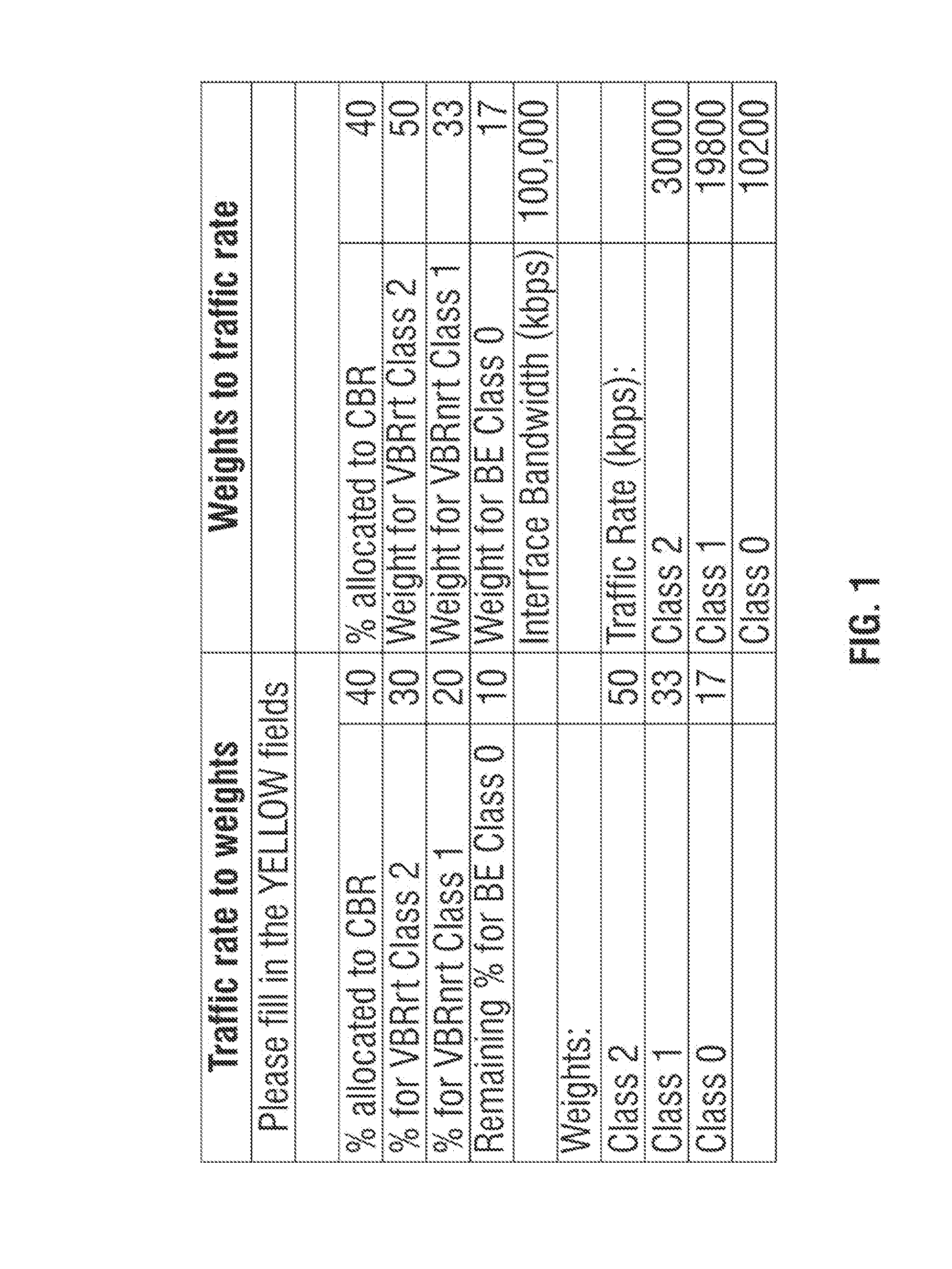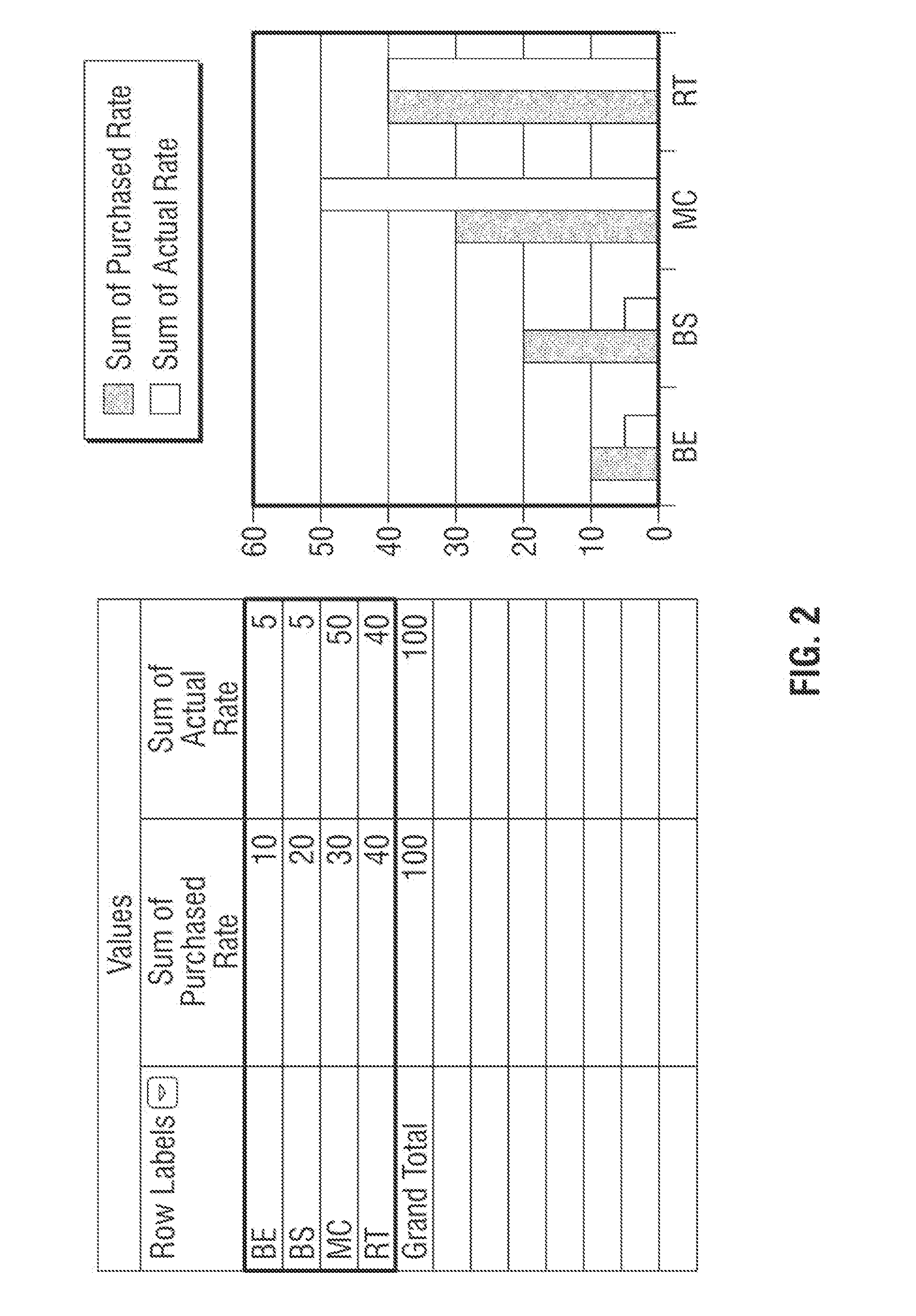Configuring traffic allocations in a router
a router and traffic allocation technology, applied in data switching networks, frequency-division multiplexes, instruments, etc., can solve the problems of loss of revenue for service providers, difficulty in determining the traffic weight and traffic rate settings necessary to achieve the desired qos
- Summary
- Abstract
- Description
- Claims
- Application Information
AI Technical Summary
Problems solved by technology
Method used
Image
Examples
Embodiment Construction
[0013]Currently, there is no defined or published documentation which explains how traffic weights are used or how to rate-limit broadcast / multicast traffic. This has led to some level of confusion and frustration for the end-users of network routers. In addition, it may be useful to leverage the abilities of most network routing platforms and enhance them to include mechanisms to generate additional revenue for end-users.
[0014]Embodiments of the present invention simplify advanced Quality of Service (QoS) configurations on network routers, such as a Tellabs® 8800 Multi-Service Router or other suitable router or routing component. Example embodiments also clarify the role of weighted fair queuing (WFQ) values on QoS and the impact of WFQ values on traffic flows. Example embodiments assist in proper provisioning of QoS in the network routers and reduce or eliminate a possibility of lost revenue due to an inadequate or improper traffic allocation configuration.
[0015]FIG. 1 shows a gra...
PUM
 Login to View More
Login to View More Abstract
Description
Claims
Application Information
 Login to View More
Login to View More - R&D
- Intellectual Property
- Life Sciences
- Materials
- Tech Scout
- Unparalleled Data Quality
- Higher Quality Content
- 60% Fewer Hallucinations
Browse by: Latest US Patents, China's latest patents, Technical Efficacy Thesaurus, Application Domain, Technology Topic, Popular Technical Reports.
© 2025 PatSnap. All rights reserved.Legal|Privacy policy|Modern Slavery Act Transparency Statement|Sitemap|About US| Contact US: help@patsnap.com



